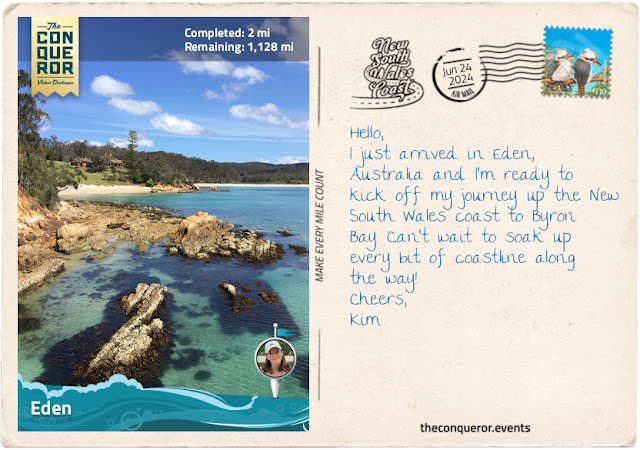Australia, known as the "Land Down Under," boasts a coastline spanning 37,000mi (59,000km) and more than 20,000 beaches. Due to its geographic isolation and evolutionary history, its incredible coast varies significantly from east to west and north to south. The eastern seaboard is all about sandy beaches, lush national parks and rocky headlands. The west coast has mostly rugged cliffs, secluded bays, and arid land, while the north is tropical, and the south is quite cool. These diverse regions have developed wonderfully unique flora and fauna found nowhere else on Earth.
To embark on this journey, I arrived in the charming town of Eden, the most southerly town in NSW. Located halfway between Sydney and Melbourne, Eden was once considered a potential site for the Australian capital. While the capital was built elsewhere, Eden became a very important whaling centre in the country.
Whaling ships have been gracing these waters since 1791, with the first whaling station established in 1828. Initially, orcas (killer whales) were seen as a nuisance when, during migration season, they would arrive in Twofold Bay in Eden looking for food and got in the way of the whalers' catch. Whalers discovered a special connection between the Thaua People and the orcas, known as "Beowa." These orcas helped herd baleen whales into the harbour for the Thaua people. In return, the orcas were given the lips and tongue of the prey as food, leading to the unspoken rule, "Law of the Tongue". Observing the success of the Thaua People, whalers developed an unlikely partnership with the orcas, especially with the pod leader known as Old Tom, a male orca measuring 22ft (6.7m) and weighing 6 tonnes. They helped each other for the next 40-odd years until Old Tom, distinguished by his long dorsal fin with a bend at the top, was found washed ashore in 1930. He was so revered and respected that one of the whalers funded the Eden Killer Whale Museum to preserve and display Old Tom’s skeleton.
As I wandered around the museum checking out the displays on shipping, whaling, fishing and anything else maritime-related, including Old Tom’s story, a sound went off, alerting visitors that a whale was seen in the bay. Not losing any time, I took a short sprint to the whale-watching platform near Aslings Beach and squinted toward the horizon, watching for any whale breaching. This is the perfect place for such an experience, as Eden is one of the best whale-watching spots in Australia, as humpback whales make their way south to Antarctica or baleen whales with calves in tow spend a few days in the area feeding and playing before continuing on what is affectionately called as the Humpback Highway.
I finished my day in Eden at the Aslings Beach Rock Pool, a short hike from the whale-watching platform. The rock pool is a beautiful natural wonder with crystal-clear seawater surrounded by stunning pink and white cliffs. After a nice dip in the water, I relaxed at one end of the pool, enjoying the brilliant view of the Tasman Sea, sandy beach and rugged coastline.












No comments:
Post a Comment
It's so good to see you here . . .